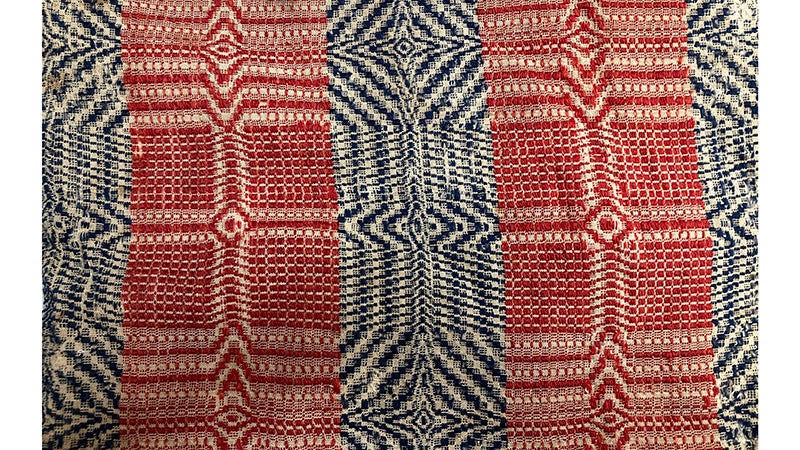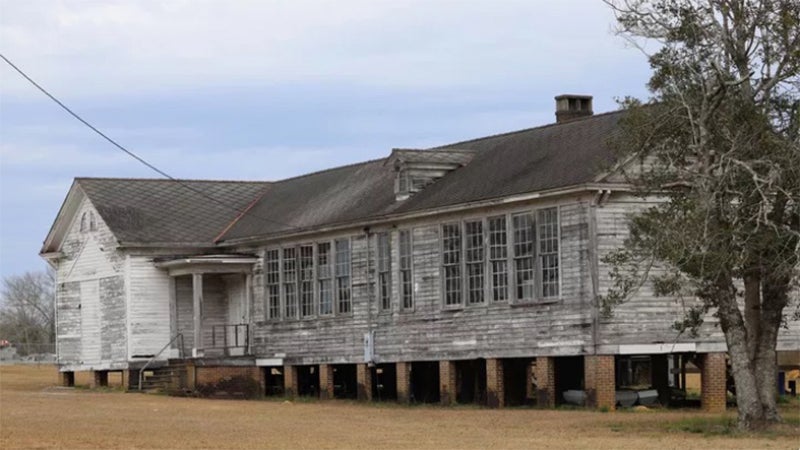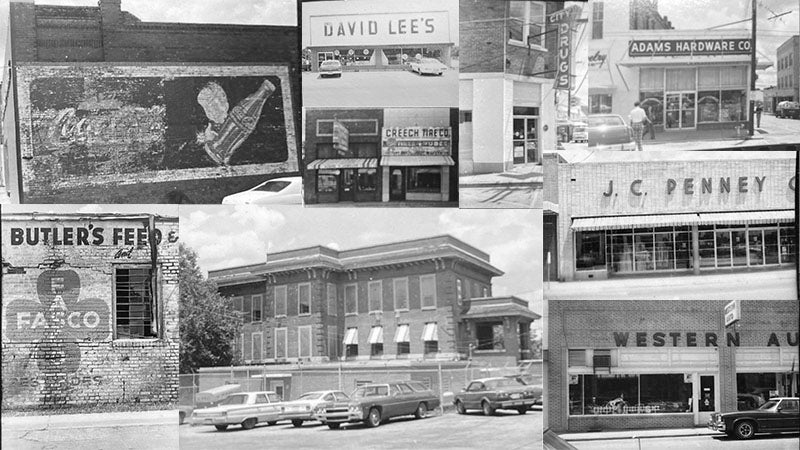Remember when: Owner of historic Purefoy had Andalusia roots
Published 12:27 am Saturday, January 7, 2017
“Have faith, hope, and charity, That’s the way to live successfully. How do I know the Bible tells me so. Do good to your enemies, and the blessed Lord you’ll surely please. How do I know the Bible tells me so. Don’t worry ‘bout tomorrow, just be real good today. The Lord is right beside you. He’ll guide you all the way…”
This song I remember from way back in the 1950s. There were a lot of tv shows with singing in those early days of television – Perry Como, Dean Martin, Andy Williams, Lawrence Welk, and The Hit Parade. “Faith, Hope, and Charity” could have been heard on any of those shows that most families gathered around the sets to watch. Time had changed in those days as the families in the 1940s had tuned in to their radios to hear musical entertainment from Radio Music Hall in New York City – after the supper dishes were washed, of course. These words to the lyrics of the song to me highlight the life of the person I will tell you about in this story – Eva Brunson Purefoy, the story of a gracious Southern lady who devoted many years of her life to serving superb food to the public in a hotel dining room.
Born in Crenshaw County, Eva, born in 1892, was the first-born of Matthew and Minnie Seale Brunson. Her father, a Coffee County native, had been attending Highland Home College with his brother Arthur. (Matt and Arthur both later named sons after the Headmaster at Highland Home College, Ellie Barnes.)Returning in 1895 to Coffee County, Matt and Minnie farmed as most rural families did. Matt, also, now holding a diploma taught school at $25 a month until he decided to leave the farm in Elba and pursue a new opportunity of railroad construction and the establishment of the railroad line extension into Andalusia from Searight helping to build a more progressive South. The new railroad track was completed in September 1899. About the year 1900, the Brunsons moved their family now consisting of five children to Andalusia establishing a permanent home.
Arriving in Andalusia by wagon, they stopped on the Public Square at the Brown-Broughton Drug Store for water for the little two-year old daughter Sue who was sick with scarlet fever. Matt built a home for his family on South Three Notch Street where two more daughters were born.
By 1905 Matt had saved enough money to purchase a property on South Cotton Street where he built a hotel in 1907, the City Hotel, that was only a stone’s throw or a block away from the L & N Railroad line. The building, a wooden structure was later bricked up and added onto. The eighth child, a son, was born there and eventually a fine family of 12 children resided in the hotel. They lived downstairs and the guests were housed upstairs. The family helped with the chores and operations of the business raising vegetables on their Carlton Street farm and milk cows and pigeons (in cages) in the back of the hotel. (Yes, their descendants still fly over the downtown!) “Papa” Brunson went down himself when the trains came in to choose the travelers he wanted to stay in his hotel. It was there that Eva got her first hotel training, and her desire to have her own hotel someday!
There was an influx of soldiers that came through on the trains during and after World War I which created a steady stream of travelers seeking lodging, therefore the City (Brunson) Hotel’s business was quite lucrative during that period of time. The hotel’s proximity to the railroad stations was a great advantage. At least four of the children were married in the hotel parlor. Eva Brunson, the oldest daughter, met a WWI soldier passing through with whom she fell in love. Tragically, he was killed in the war. She later met and married Mr. Robert Purefoy whose wife had died.
Mr. Purefoy, born in Furman, a town in Wilcox County about 20 miles from Camden, was the son of Dr. John Purefoy who had served as a surgeon in Lee’s army during the Civil War. It was in the little town of Furman that Robert learned the ways of being a debonair southern gentleman. Upon finishing high school, he attended Poughkeepsie Business College in New York and became an accountant.
Eva attended the Andalusia City Schools and studied music and art with private lessons. Her family with all of the sisters and brothers attended the First Baptist Church, the old church location behind the Covington County Courthouse. She once painted a watercolor picture of the church, and that picture still exists today (in my home).
In 1916, Eva Purefoy’s dream of a hotel came into being when the first Purefoy Hotel opened its doors in the little South Alabama town of Monroeville with Mr. and Mrs. Purefoy as its host. When guests arrived, they found quite different facilities from those of today. Bowls and pitchers were the order of the day with a set in each room. Outdoor privies were in use for there was no public sewage system. Hired help did the laundry over wash tubs in the back yards and the clothes were dried on lines in the sun. Ironing was done with a flat iron usually heated on the kitchen stove. The linens were kept snowy white. Although there were no vacuum cleaners, the floors were kept spotless. No one counted the time it took to do a good thorough job of cleaning.
The small talk and everyday news had to be passed around by word of mouth for there were no telephones in the hotel and very few in the town. Those people with telephones used them mostly for business purposes because there were so few homes that could boast one.
Traveling men found the hotel a “home away from home” and often rode miles out of their way to visit The Purefoy and enjoy its southern cuisine. Mrs. Purefoy soon came to know their weekly and monthly routes of trade. She remembered their favorite dishes and found it a pleasure to serve them when they appeared for a visit.
It was soon seen that more space was needed for the hotel’s operation. The Purefoys began to look for a new location so Mr. Purefoy decided to go and search. He stopped in Talladega where he made it known that he was interested in a new home for The Purefoy Hotel. Mr. Purefoy returned to Monroeville with the good news that a large boarding house with pleasant surroundings had been found in the foothills of the Blue Ridge Mountains, Talladega, the “Bride of the Mountains.” The Purefoys regretted leaving their friends in Monroeville after having lived and worked there for four years, but adventure was calling and expansion was just around the corner.
On May 17, 1920, the new Purefoy Hotel in Talladega opened. After the first year, an addition to the building became reality with steam heat and running water with bathroom accommodation for every room. Every drop of water that went on the hotel table had to be boiled since typhoid fever had claimed many lives in many Alabama towns. It was indeed a great day for rejoicing when the water supply was built for the city.
With determination and optimism, Eva Purefoy went on with the business. By the late 1930s, 300-400 people were being served daily in the dining room. The Purefoy had grown from 20 rooms to 88 rooms, and its reputation grew and grew. Where else could one dine on 30 different southern dishes for $1.65 or $2.10 for non-roomers? The greatest number of people ever served at one time at The Purefoy was 525 on a Sunday.
There were always the old-time favorites of roast beef simmering in its own juices, chicken and turkey prepared in every possible way – fried, smothered, roasted, in salad, in hash. A large bowl of fresh fruit salad with a savory dressing was a tradition on the table. Dozens of vegetables were served at each meal including candied yams and asparagus with almonds. Homeade pies were always on the menu – pecan, apple, cherry, and lemon ice box. They made their own homemade rolls and ice cream. Eva Purefoy worked with her creative and faithful cook Florence Sawyer to make everything good. She said, “We didn’t want a single dish served that lacked quality.” And so she went about the kitchen sniffing, stirring, and tasting to be sure the flavor, color and consistency met her high standards.
As time passed, The Purefoy’s fame spread beyond the borders of Alabama. Travelers from coast to coast discovered the hospitality and gustatory delights to be enjoyed at the hotel. The dining room became widely known as writers for national magazine and newspapers sampled the delicious food and went home full of praise. Life Magazine and McCall’s Magazine did feature stories on The Purefoy’s excellence in preparation and presentation of food. Duncan Hines in his book, “Adventures in Good Eating,” listed The Purefoy as one of the select eating places of the nation. At The Purefoy, the horn of plenty was a reality as well as a picture on the “groaning board.” It was said that The Purefoy supper could put five pounds on a guest!
Celebrities who ate at The Purefoy over the years included the Duke and Duchess of Windsor, numerous Alabama governors and legislators, and such Hollywood personalities as Broderick Crawford, William Bendix, and Lash LaRue!
Mrs. Purefoy often gave credit to those she fondly called her “hotel family,” the housekeepers, the cooks, the head waiter, the carvers, the porters – those who went about their everyday tasks. The hotel family kept the friendly atmosphere going from dawn to dawn. The comical incidents, the tragic occurrences, the heartaches, the joys, the tales of travel were all in the themes of conversation discussed on the broad veranda of the hotel.
Many a plate of left-over food was served at the back door during the depression free to those in need who often wandered up. Eva Brunson was a philanthropist in every way. The Purefoy once catered hot meals to 26 passenger trains a day passing through Talladega. At one time a fleet of four trucks rushed hot meals to trainside for passengers.
The Purefoy existed during a period of history when people appeared to communicate in a friendly small town atmosphere. Usually there were residents of the town who felt a part of the local welcoming group and who visited the hotel during their daily trip to the post office or the bank.
Mr. Purefoy passed away in 1939 and by 1944, Mrs. Purefoy lost the joy in entertaining that she had possessed, and she sold the hotel to her son-in-law, Mr. Ed Hyde, a most genial host who sustained the hotel’s fine tradition. By 1960, the shortage of trained labor made it difficult to accommodate the large number of guests that frequented the hotel. Thus on December 1, 1961, after 47 successful years, the hotel doors closed, and it was immediately razed to make the land available for the construction of a new bank. A great tradition of eloquent Southern cooking and hospitable service at The Purefoy ended.
The first edition of The Purefoy Hotel Cookbook was printed in 1937 and copyrighted in 1941. It was revised nine times in 1942, 1946, 1949, 1960, 1971, 1975, 1978, 1986, and 2016. To date, this classic cookbook has sold more than 170,000. copies.
During the years, Mrs. Purefoy enhanced the attractions of an excellent cuisine and a friendly atmosphere with many unusual and rare pieces of antique furniture which graced The Purefoy’s dining room, lobbies, and guest rooms.
After Eva Purefoy retired, she purchased an enormous Victorian house on the corner of South and Cherry Streets, the Jemison house built in 1898. She filled it with memories of bygone days. Two of her sisters returned to live with her. They often made frequent visits back to Andalusia and Houston to visit the relatives. When Talladega hosted an historic pilgrimage, the doors of the stately home designed by architect Stanford White were opened for the crowds to tour and view her enviable collection of antiques. If she regretted the passing of the hotel, no one knew about it for it was still a part of her life as she autographed books and shared her recipes and memories with everyone, and REMEMBERED WHEN “The (famed) Purefoy was one of the greatest small town hotel businesses this country has ever known!”
Eva Brunson Purefoy, known to all of her family as “Sister,” passed away in October 1975 at the age of 83 years. The Alabama Institute for Deaf and Blind obtained the home in 1984 for a transitional living program for deaf young women. It is listed on the National Register of Historic Places.





